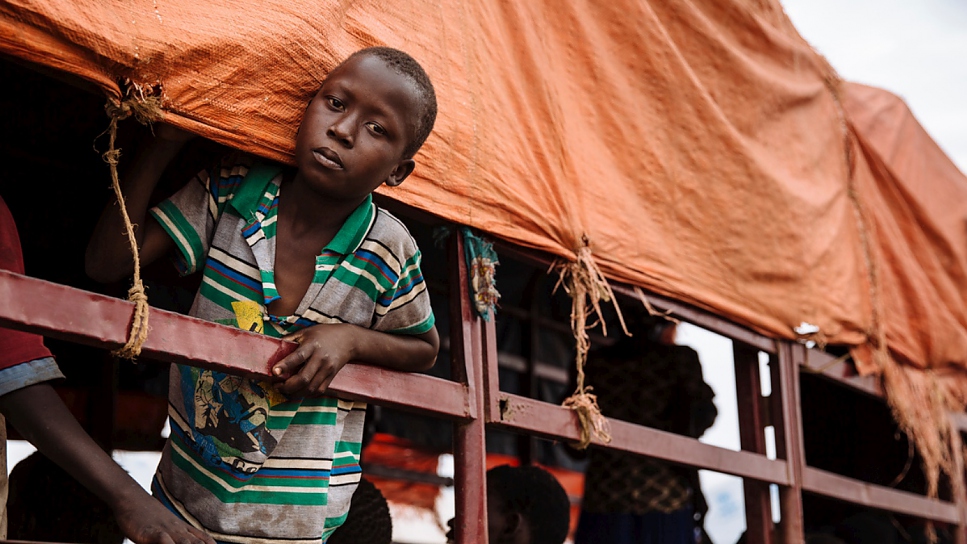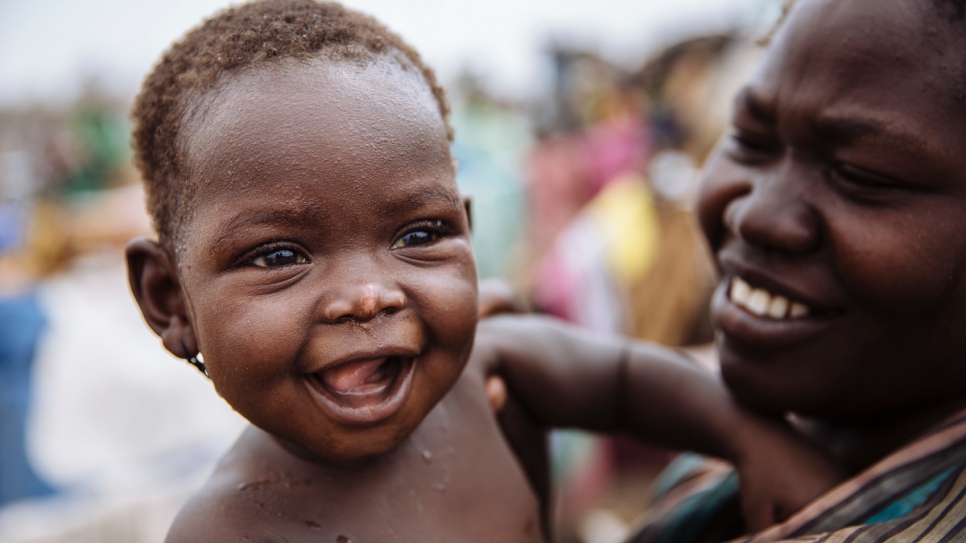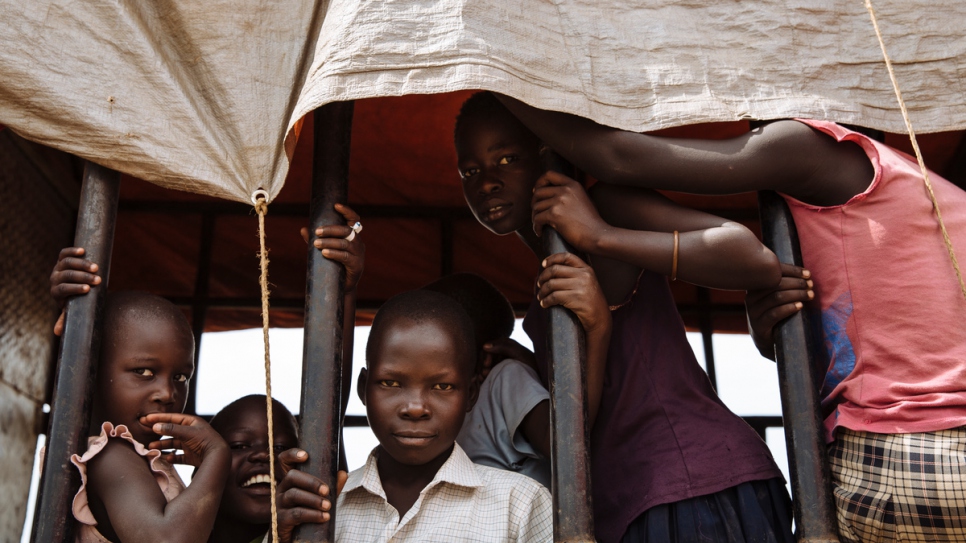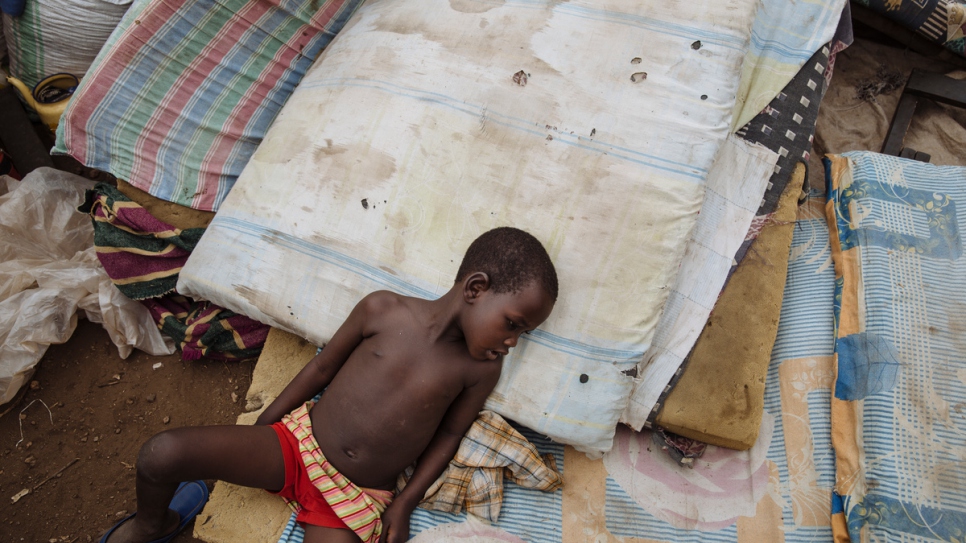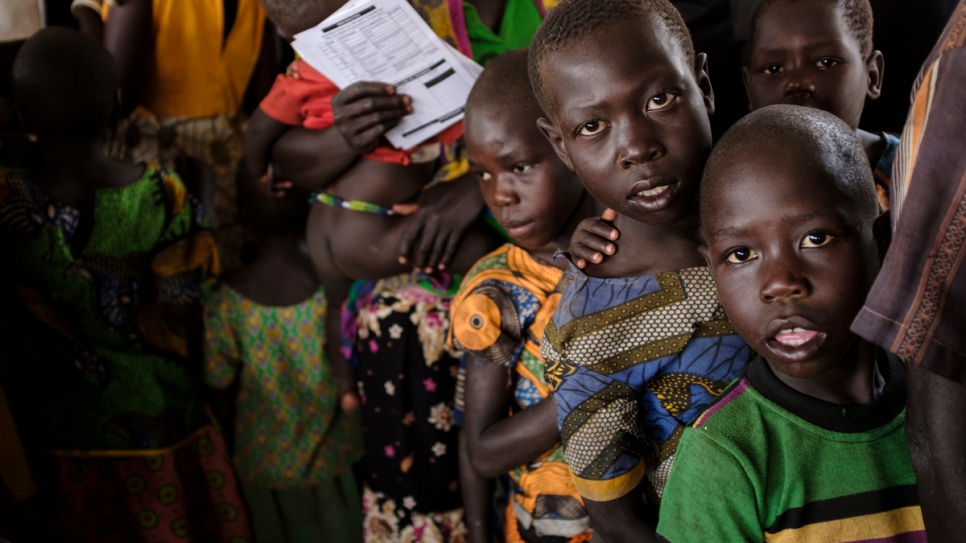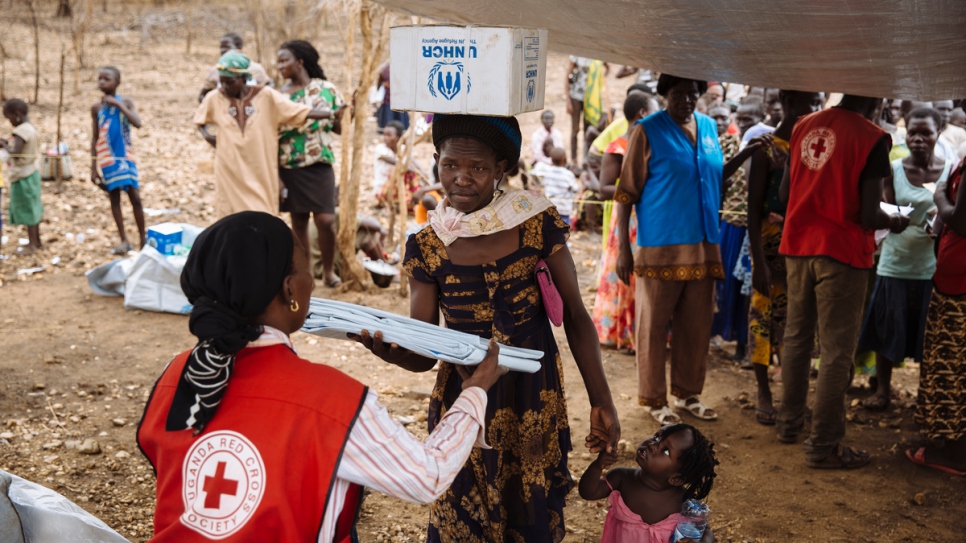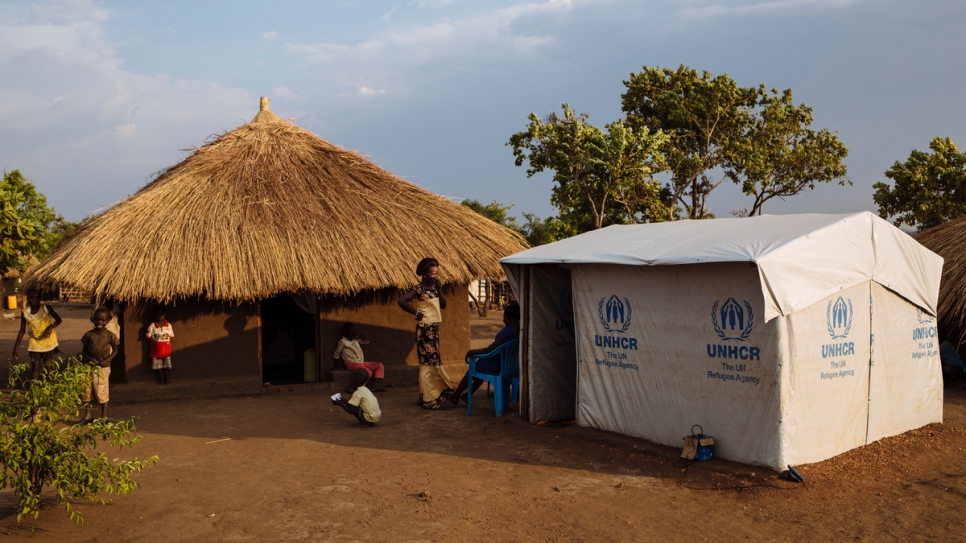More than one million children flee South Sudan violence
Children make up 62 per cent of more than 1.8 million refugees uprooted by three years of escalating conflict in South Sudan, according to the latest UN figures.

A one-month-old baby girl from South Sudan sleeps on a mat in Bidibidi refugee settlement, Uganda. © UNHCR/David Azia
BIDBIDI REFUGEE SETTLEMENT, Uganda – As armed marauders closed in on her home in Yei, South Sudan, mother of two Aisha fled on foot, with her youngest son strapped to her back.
Along the path to the border, the group were stopped by armed men. Ordered to kneel down, Aisha believed that they were going to be executed.
“They attacked us they wanted to kill us even, but I was holding a small baby,” said Aisha, convinced that the gaze of four-year-old Jonathan looking back into the eyes of one of their attackers saved their lives.
“When they saw me like this, they just asked me to go.”
During the assault, her eldest son, 13-year-old Godwin, sensed the grave danger they were in and was distraught. But Aisha kept reassuring him that everything would be okay, and focused on keeping the children’s spirits up as they trekked through the bush to Uganda.
“They attacked us they wanted to kill us even, but I was holding a small baby.”
“I encouraged the children. I told them things will be better. Because something happened in our home, that’s why we came here for safety. But in time, things will be alright.”
Godwin and Jonathan – who are now safe at Bidbidi Refugee Settlement in Uganda - are among more than one million children who have fled more than three years of conflict in South Sudan, UNICEF and UNHCR, the UN Refugee Agency, announced today.
Children make up 62 per cent of more than 1.8 million refugees from South Sudan, according to the latest UN figures. Most have arrived in Uganda, Kenya, Ethiopia, and Sudan.
Inside South Sudan, more than 1,000 children have been killed or injured since fresh conflict erupted in 2013, while an estimated 1.14 million children have been internally displaced.
Nearly three quarters of the country's children are out of school -- the highest proportion of out-of-school children in the world.
The trauma, physical upheaval, fear and stress experienced by so many children account for just part of toll the crisis is exacting. Children remain at risk of recruitment by armed forces and groups and, with traditional social structures damaged, they are also increasingly vulnerable to violence, sexual abuse and exploitation.
More than 75,000 children in Uganda, Kenya and Ethiopia have crossed South Sudan’s borders either unaccompanied or separated from their families.
As well as caring for her own children, Aisha also cares for her nephews, six-year-old twins Godfrey and Pilip, after they become separated from her sister as they fled. She also recently became a foster mother to Mercy, a four-year-old a girl with a disability found abandoned in the settlement.
She and the children now live in a new mud hut or tukul she built from grass and mud bricks she made herself.
Aisha dreams that the children can go to school and that she will receive the support she needs to feed them so they can grow up strong and educated – and look after her when she is old.
“I'm just dreaming that they will find a way to study and that I can feed them. Or if anyone can help to support, because I know I cannot. I'm just praying to God to open another way so that they will maybe help me in the future.”
“I'm just dreaming that they will find a way to study and that I can feed them."
UNHCR is providing shelter to over half a million South Sudanese refugees in northern Uganda and is urgently preparing new settlements to shelter 30,000 new arrivals. Much greater support is needed to ensure that every refugee family has somewhere safe to live, as well as urgent humanitarian assistance
Refugee families fleeing in search of shelter and safety face a double catastrophe as the rainy season closes in. Children are most at risk from the health and protection risks of inadequate shelter, and urgently need your support.

